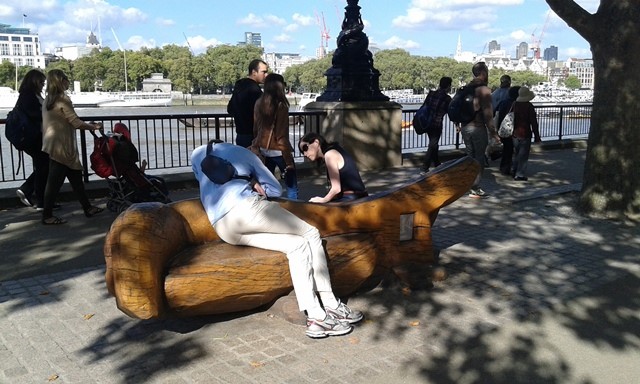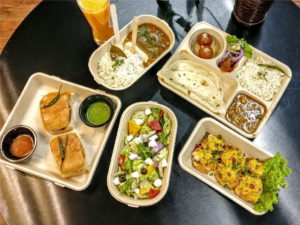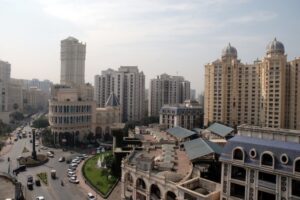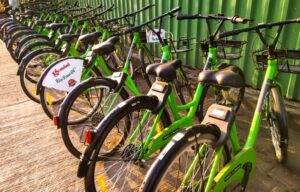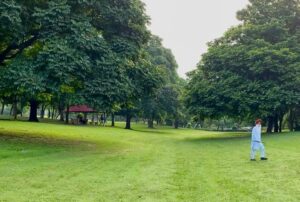Introduction
Sustainable living and sustainable development is about finding ways to live more sustainably. This also means using resources efficiently today in a way that maintains their supplies for the future. Sustainability doesn’t require living without luxuries and comforts, but it is of being aware of your resource consumption and reducing waste.
Live Sustainably is an initiative of In AWE, where we are looking at bringing change at the grass root level. Citizens, who make a major part of the users and respondents, need to become a part of this exercise. Whether it is the users or service providers, they need to choose and provide wisely.
In this write up, we explore the behavioral changes required to adapt to sustainable living. If we start changes at the bottom of the pyramid and climb up, we could achieve changes at the societal level.
Behavior and impact
Climate change is one of the major factors of change affecting quality of life world over. India is the world’s third largest emitter of greenhouse gases (GHGs), after China and the US. The pledge is for a 33-35% reduction in emissions by 2030, compared to 2005 levels.
To enable behavioral change in the society, we need to understand individual beliefs, motivations and group level factors such as peer influence, cultural beliefs, etc. This can have an impact only when a group of people from diverse backgrounds become a part of a larger change through their own calculated actions and choices. It is important to study the complete lifecycle of human activities and their adaptability to changes.
Why is Sustainability important?
Earth has limited ecological capacity and ability to regenerate the resources. We create footprints by consuming a certain amount of resources per person. If we consume less and at a slower pace, planet will regenerate the resources and we will keep the equation to net zero. But the problem arises due to increase in population at a greater speed and per capita allowance of resources reduces. And the equation of speed of time to consume and regenerate becomes negative.
This results in debt and deficit of natural resources. To keep the usage lower than the renewal we need to seriously change our habits.
Changes at individual level:
To promote a sustainable living we have to pave a way towards a new thinking and lifestyles. While on the individual level, following changes have to be brought about:
Reduce household energy use
- Use LED lights/bulbs
- Unplug the appliances not in use
- Create more day lighting in your home
- Switch to solar panels, if possible
- Open windows to allow a breeze instead of turning on the air conditioning.
- Hang clothes to dry instead of using the dryer.
- Use an electric tea kettle rather than a stovetop kettle to boil water.
- Turn off appliances and lights that you’re not using.
- Install energy-efficient appliances
Choose local
Eating locally produced food is a sustainable way of living. Supermarkets have brought in the culture of choices. Picking up fruits and food or other products from all over the world over the ones locally produced, costs a huge carbon footprint. Imagine the fossil fuel energy consumed to bring the products!
Forget Disposables
Many of the environmental health issues today arise from toxins released into the environment even by properly disposed of trash, such as that in a landfill. Studies show roughly 31% or roughly a third of all Municipal waste is attributed to Food Packaging. This is a problem that we as a society need to work towards. Using bio-degradable disposables are better, such as garbage bags or party plates and cutlery made out of bamboo or sugarcane husks.
Plant seeds or trees
Planting trees is the best way to reduce or reverse our carbon foot print and benefits are:
Photo credit: Dipika Tuteja
- Helps bio-diversity
- Prevents soil erosion and flooding,
- Improves water catchment,
- Generates oxygen, and
- Reduces pollution.
Recycle & Reuse
- By extending the life of any product, you help reduce dependence on disposable or cheaply made single-use products that end up in landfills.
Resell and donate items
- Items that you no longer need can get an extended life through resale and donation.
- Donate clothing, children’s stuff or household items that you do not need, to a nonprofit resale organization (such as Goonj) or charity organization that will redistribute them to those in need.
Save Water
30 to 60% of domestic drinking water is used to water plants and gardens, and often large portions are wasted by over-watering.
Population growth, urban development and global warming are already putting pressure on water quality and availability. There are a few simple things one can do at home to ease the burden on local water supply and save money in the process.
- Turn off the faucet while brushing your teeth.
- Only run the washing machine and dishwasher when you have a full load.
- Use a low flow shower head and faucet aerators.
- Fix leaks.
- Install a dual flush or low flow toilet
- Don’t overwater your lawn during peak periods,
- Reuse water for plants
- Plant a rain harvesting pit for catching storm water runoff from your roof, driveway, and other hard surfaces.
- Monitor your water usage on your water bill
- Limit travelling by car
- Use alternate ways of commuting.
- Cycle or walk for short distances.
- Use public transport or choose carpooling for office commutes.
Once habits change at the individual level, half the battle is won!
Changed Urban Scenario
Land use
The existing neighborhoods need to be remodeled with both large-scale and small-scale possibilities. This includes mixed-use planning with compact architecture and locating businesses close to where the people live. Basically transit oriented development. Creating parks and other green spaces to provide recreation for people and habitat for wildlife and reducing distances.
Hiranandani Estate in Powai, Mumbai, Photo credit: https://propstory.com/locality/mumbai-powai-real-estate/
Water Bodies rejuvenation
The situation of water and water bodies in India are in a terrible condition. The country has lost over 70% of water bodies like marshes and lakes in just the Gangetic plains located in the Northern parts. In many places, even rain-fed lakes are dying at an alarming rate. At times, when 600 million people are severely water-stressed, the disappearance of water bodies becomes disturbing.
This becomes a very important aspect in sustainable development, as due to rampant development, storm water runoff coefficient is high. With the original catchment areas as ponds and lakes, flooding of cities and towns used to be under control. Development of all these water bodies in and around the towns and cities adds to a choice for entertainment.
Photo credit: Dipika Tuteja
Becoming Carbon Neutral
Becoming carbon-neutral requires that greenhouse gas emissions are reduced by at least 80% from the previous years. A carbon-neutral India should be created in collaboration between the residents, the Cities, businesses and organizations.
It has been seen that during the lockdown, pollution levels have come down. This makes a few things very clear that most emissions come from traffic. And to continue with good air quality and environment, we need sustainable traffic solutions and for industries all over the country to move to clean fuel.
Photo credit: https://www.outlookindia.com/outlooktraveller/explore/story/69418/cycle-friendly-cities-around-india
People should be made to reduce their kilometers travelled by car. They should have more choices of low-emission methods of transport such as:
- Promoting the use of electric cars
- Making charging facilities available
- Raising parking fees and extending parking fee zones
- Promoting walking, cycling and the use of public transport
City Attractions
Tourist attractions in the city like Museums, art galleries and nature walks should be developed sustainably.
Photo credit: Architect Anjali Sagar
An important point to consider in terms of attractions is the energy consumption of the building, along with the accessibility. The steps for sustainability can be different for different types of attractions.
How does this work?
When behaviors change at the lifestyle level, and choices given at the urban level are sustainable, that is when the impact can be substantiated.
References:
https://www.dummies.com/education/science/environmental-science/ten-ways-to-live-sustainably/
https://www.carbonbrief.org/the-carbon-brief-profile-india
https://youmatter.world/en/definition/definitions-sustainable-development-sustainability/


